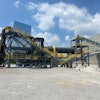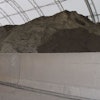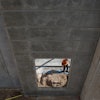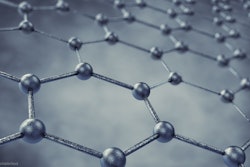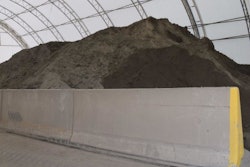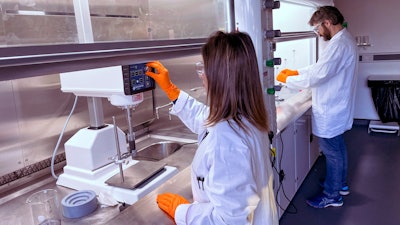
Announced in mid-August, Gerdau Graphene, released a new admixture for concrete called NanoCONS, "enabling concrete producers to leverage the unprecedented physical properties of graphene to improve the mechanical performance of their concrete products."
As stated in their release, at approximately 100-300 times stronger (in terms of tensile strength) than structural steel, graphene is one of the strongest materials known to exist. It is anticipated that adding this graphene admixture to cementitious materials would reduce carbon emissions associated with concrete production "by up to 20%" without loss of concrete performance. Currently, the admixture NanoCONSW104, was developed to be utilized within the precast industry such as hollow core slabs or precast foundation piles. However, we are told that the company's R&D team are working on the development of other products with the objective of creating specific solutions for other types of concrete, using graphene as a functional element inside the concrete matrix.
Concrete Contractor connected with Valdirene Peressinotto, Executive and Innovation Director at Gerdau Graphene over email for more.
But first, some background. Gerdau, a multinational steel producer out of Brazil, began studying graphene in 2017 to identify its properties as related to the company’s business. In 2019, it created Gerdau Next - a business aimed at exploring new segments. The company is part of the Brazilian graphene research ecosystem, in partnership with several ICTs, such as IPT, SENAI and UFMG as well as a partnership with the Graphene Engineering Innovation Center in Manchester, England.
Q. What is graphene? Where does it come from?
 Gerdau Graphene
Gerdau Graphene
- Protection and Durability: the gain in strength provided by graphene makes materials more durable.
- Material Reduction: improves properties and thus allows for using less material.
- Material Replacement: heavy metals in some applications and migration from solvent-based to water-based formulas.
- Barrier Properties: graphene functions as a barrier for various materials, such as gases or UV rays, water or even bacteria and viruses.
Gerdau Graphene does not produce graphene—there are many other companies that produce graphene. Our greatest know-how lies in customizing these nanomaterials and incorporating them into the appropriate media, whether in liquid or solid phase, obtaining additives that bring performance gains to our customers to use on an industrial scale.
Q. This isn’t the only graphene-based additive from Gerdau Graphene. The original lines were designed for paints and coatings. What made you enter the concrete industry?
Gerdau has a broad portfolio of solutions for the construction industry, with products for foundations, structures, rebars, profiles and trusses, among many others. The development of graphene solutions for the construction sector enriches the ecosystem of the entire company. Through Gerdau Graphene, we can help complement end-to-end service for our customers, offering innovative graphene technologies.
Gerdau Graphene has developed its proprietary G2D technology, which is applied in all its products. It is a technology for incorporating carbon nanomaterials such as graphene into various matrices for the production of industrial additives.
Q. What was the testing process? Can you share a story from the development of NanoCONS?
Gerdau Graphene has a proprietary route that starts with the graphene selection, followed by a complete characterization program and parameters study. After that, we proceed with tests on a laboratory scale and in a pilot-plant producing our water-based graphene dispersions. During each phase, we carry out tests of mechanical performance on different levels, from cement paste to mortars and finally in concrete. Before any product is released, all NanoCONS products undergo testing in our laboratory and by industrial partners, such as precast and concrete mixer companies.  Gerdau Graphene
Gerdau Graphene
Q. Can you tell us about the “eureka” moment when development started to finally come together?
Good question. It was after an extensive laboratory testing program, after which we set out on the first application with an industrial partner. During the mixing of the concrete, we noticed graphene altered the behavior of concrete and our experience told us that performance could be modified with the addition of graphene.
Q. What is the ratio to concrete mix? How much of the additive is mixed in a standard unit of concrete?
In general, and according to our experience, it depends on the type of cement and the type of admixture. However, the ratio of graphene is the order of 0.01-0.03% by weight of cementitious.
Q. What qualities of graphene are contributing to its reduced water consumption?
It is important to say that there are “different” types of graphenes, with different functionalization, aspect ratios, morphology, etc. All these characteristics have an impact on water consumption according to the concrete mix proportions. In our case, we are talking about a product with graphene, NanoCONS W104. Applying NanoCONS W104 we had concretes with 10-15% of water reduction on specific types of concrete, ensuring appropriate workability.
Q. Will NanoCONS be made available in the U.S. market? If so, when?
NanoCONS W104 is already available for testing and approval. It will be available on a commercial scale as of January 2025.


